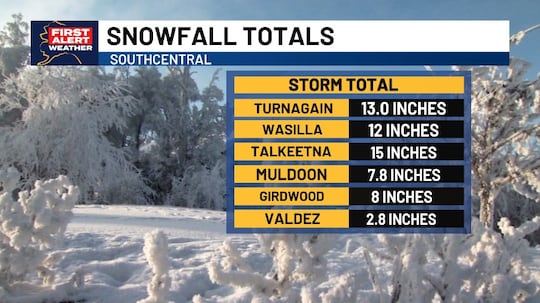Alaska
Alaska is short on gravel and long on development projects
The state’s North Slope communities need rocks, and they’re hard to come by.
Every year, millions of migratory birds flock to Arctic Alaska. Hundreds of thousands of caribou use the tundra, rich in plant life, as their calving grounds. Alaska’s North Slope is also rich in other natural resources: oil, gas, minerals. But one important thing is lacking: Rocks. “Yes, gravel is a precious commodity on the North Slope,” said Jeff Currey, an engineer with the state’s Department of Transportation and Public Facilities who works in the agency’s Northern Region Materials Section. For decades, Currey said, the state has been searching for gravel all over the North Slope, with limited success.
Gravel is essential for all kinds of long-term development: building projects, road construction, runways and other major infrastructure. “There’s a big need for gravel, and not a lot of it, is really what it comes down to,” said Trent Hubbard, a geologist with the Alaska Division of Geological and Geophysical Surveys.
An aerial view of Kaktovik, Alaska, in 2016. Gravel is essential for village building projects.
Sylvain Cordier/Gamma-Rapho via Getty Images
“We need roads. We need housing developments,” said Pearl Brower, president and CEO of Ukpeaġvik Iñupiat Corporation (UIC), based in Utqiaġvik, during a panel discussion at last year’s Arctic Encounter Symposium, the largest annual Arctic policy symposium in the United States. Brower was among a handful of leaders from across the Arctic speaking on the region’s future.
“I definitely think it’s kind of a paramount necessity,” said Brower. UIC runs a construction company that has completed more than $1 billion in construction projects throughout the United States. The company’s website boasts that it specializes in remote locations. Brower said its projects over the last three decades have exhausted two gravel pits, and the corporation is now developing another. “You look all around (Utqiaġvik) and we’re very gravel-based,” Brower said. “You know, we don’t have pavement for the most part, and you wonder, ‘Wow, you know, where did all this gravel come from?’”
Ross Wilhelm — the project superintendent at UIC Sand and Gravel, which opened a new pit last year — said that if all the projects that currently require gravel from UIC’s pit are completed, it could be in operation for up to nine years.
According to Wilhelm, climate change is increasing demand: Gravel is needed for stabilizing existing infrastructure as the frozen ground underneath it thaws, as well as for a seawall to protect Utqiaġvik from high rates of coastal erosion. “I think it’s a big factor,” he said. A five-mile-long sea wall was priced at nearly $330 million, according to a 2019 feasibility study by the U.S. Army Corp of Engineers.
Gravel may also be a means to a richer economic future for Alaska’s North Slope. “To keep the economy growing, it’s so vital,” said Wilhelm. Many of the region’s residents dream of connecting at least some of its eight main communities by road, but doing so would require lots of gravel. The state and the North Slope Borough are partnering on a project, the Arctic Strategic Transportation and Resources, or ASTAR, that could do exactly that. It’s been under evaluation by state geologists since 2018.
The issue isn’t just locating enough gravel for projects like ASTAR; the cost can also be exorbitant. Currey said he’s heard of other North Slope projects where the bids are as high as $800 a cubic yard for gravel, enough to cover about 50 square feet. In Anchorage, a cubic yard of aggregate gravel — the kind used for building projects — goes for about $15. “The DOT has paid on the order of a couple hundred dollars a cubic yard for material being barged in, because that’s the only way to do it,” Currey said. Some of those barges come all the way from Nome, traveling more than 700 sea miles north and east through the Bering Strait and up and into the Beaufort Sea to deliver gravel.
“The DOT has paid on the order of a couple hundred dollars a cubic yard for material being barged in, because that’s the only way to do it.”
Gravel is also a prized commodity for the oil and gas industry. Last year, the Biden administration approved ConocoPhillips’ Willow Project, a decades-long oil-drilling project in the National Petroleum Reserve. The controversial endeavor will require 4.2 million cubic yards of gravel — more than 12,800 Olympic-size swimming pools’ worth of rocks — for its three oil drilling pads, as well as enough for more than 25 miles of new road. Much of that gravel will come from a 144-acre mine ConocoPhillips will dig itself.
When it comes to gravel, the Willow Project may fare well, mainly due to its geography; it will be located just west of the village of Nuiqsut, where there’s actually plenty of gravel. Nuiqsit lies on the eastern side of Alaska’s North Slope, where the Brooks Range is closer to the coast. Streams that run northward down the mountains carry gravel with them, according to Hubbard.
The West Dock Causeway is part of the oil and gas infrastructure on Alaska’s North Slope. Gravel is a prized commodity for the oil and gas industry. [
Orbital Horizon/Copernicus Sentinel Data 2020/Gallo Images via Getty Images
But the North Slope is vast, spanning nearly 95,000 square miles, and further west, gravel resources dwindle: The mountains are farther from the coast, and gravel gets caught in the Colville River. “Much of the material north of the Colville River is largely silt and sand left over from historic sea-level rise and fall,” said Hubbard. It’s the kind of material that doesn’t work for projects like Willow or the roads and critical infrastructure that communities rely on. “Gravel,” said Hubbard, “is just a really hard resource to find.”
Emily Schwing is a reporter based in Alaska. Follow @emilyschwing
Email High Country News at [email protected] or submit a letter to the editor. See our letters to the editor policy.

Alaska
Alaska delegation mixed on Venezuela capture legality, day before presidential war powers vote

ANCHORAGE, Alaska (KTUU) – Alaska’s congressional delegation had mixed reactions Wednesday on the legality of the Trump administration’s actions in Venezuela over the weekend, just a day before they’re set to vote on a bill ending “hostilities” in Venezuela.
It comes days after former Venezuelan Nicolás Maduro was captured by American forces and brought to the United States in handcuffs to face federal drug trafficking charges.
All U.S. Senators were to be briefed by the administration members at 10 a.m. ET Wednesday, including Secretary of State Marco Rubio and Secretary of Defense Pete Hegseth, according to CBS News.
Spokespersons for Alaska Sens. Lisa Murkowski, R-Alaska, and Dan Sullivan, R-Alaska, say they were at that meeting, but from their responses, the two shared different takeaways.
Sullivan, who previously commended the Trump administration for the operation in Venezuela, told KDLL after his briefing that the next steps in Venezuela would be done in three phases.
“One is just stabilization. They don’t want chaos,” he said.
“The second is to have an economic recovery phase … and then finally, the third phase is a transition to conduct free and fair elections and perhaps install the real winner of the 2024 election there, which was not Maduro.”
Murkowski spokesperson Joe Plesha said she had similar takeaways to Sullivan on the ousting of Maduro, but still held concerns on the legality.
“Nicolás Maduro is a dictator who led a brutally oppressive regime, and Venezuela and the world are better places without him in power,” Plesha said in a statement Wednesday. “While [Murkowski] continues to question the legal and policy framework that led to the military operation, the bigger question now is what happens next.”
Thursday, the Senate will decide what happens next when they vote on a war powers resolution which would require congressional approval to “be engaged in hostilities within or against Venezuela,” and directs the president to terminate the use of armed forces against Venezuela, “unless explicitly authorized by a declaration of war or specific authorization for use of military force.”
Several House leaders have also received a briefing from the administration according to CBS News. A spokesperson for Rep. Nick Begich, R-Alaska, said he received a House briefing and left believing the actions taken by the administration were legal.
“The information provided in today’s classified House briefing further confirmed that the actions taken by the Administration to obtain Maduro were necessary, time-dependent, and justified; and I applaud our military and the intelligence community for their exceptional work in executing this operation,” Begich said in a statement.
Looming vote
Sen. Tim Kaine, D-VA, authored the war powers resolution scheduled for debate Thursday at 11 a.m. ET — 7 a.m. AKST.
It’s a resolution which was one of the biggest topics of discussion on the chamber floors Wednesday.
Sen. Rand Paul, R-KY, said on the Senate floor Wednesdya that the actions taken by the administration were an “act of war,” and the president’s capture of Maduro violated the checks and balances established in the constitution, ending his remarks by encouraging his colleagues to vote in favor of the resolution.
“The constitution is clear,” Paul said. “Only Congress can declare a war.”
If all Democrats and independents vote for the Kaine resolution, and Paul keeps to his support, the bill will need three more votes to pass. If there is a tie, the vice president is the deciding vote.
“It’s as if a magical dust of soma has descended through the ventilation systems of congressional office buildings,” Paul continued Wednesday, referring to a particular type of muscle relaxant.
“Vague faces in permanent smiles and obedient applause indicate the degree that the majority party has lost its grip and have become eunuchs in the thrall of presidential domination.”
Legality of actions under scrutiny
U.S. forces arrested Maduro and his wife, Cilia Flores, from their Caracas home in an overnight operation early Saturday morning, Alaska time. Strikes accompanying the capture killed about 75 people, including military personnel and civilians, according to U.S. government officials granted anonymity by The Washington Post.
Maduro pleaded not guilty Monday in a New York courtroom to drug trafficking charges that include leading the “Cartel of the Suns,” a narco-trafficking organization comprised of high-ranking Venezuelan officials. The U.S. offered a $50 million reward for information leading to his capture.
Whether the U.S. was legally able to capture Maduro under both domestic and international law has been scrutinized in the halls of Congress. Members of the administration, like Secretary of State Marco Rubio, have been open in defending what they say was a law enforcement operation carrying out an arrest warrant, The Hill reports. Lawmakers, like Paul or Sen. Chuck Schumer, D-NY, say the actions were an act of war and a violation of the constitution.
While the president controls the military as commander in chief, Congress constitutionally has the power to declare wars. Congressional Democrats have accused Trump of skirting the Constitution by not seeking congressional authorization before the operation.
Murkowski has not outright condemned or supported the actions taken by the administration, saying in a statement she was hopeful the world was safer without Maduro in power, but the way the operation was handled is “important.”
Sullivan, on the other hand, commended Trump and those involved in the operation for forcing Maduro to “face American justice,” in an online statement.
Begich spokesperson Silver Prout told Alaska’s News Source Monday the Congressman believed the operation was “a lawful execution of a valid U.S. arrest warrant on longstanding criminal charges against Nicolás Maduro.”
The legality of U.S. military actions against Venezuela has taken significant focus in Washington over the past several months, highlighted by a “double-tap” strike — a second attack on the same target after an initial strike — which the Washington Post reported killed people clinging to the wreckage of a vessel after the military already struck it. The White House has confirmed the follow-up attack.
Sullivan, who saw classified video of the strike, previously told Alaska’s News Source in December he believed actions taken by the U.S. did not violate international law.
“I support them doing it, but they have to get it right,” he said. “I think so far they’re getting it right.”
Murkowski, who has not seen the video, previously said at an Anchorage press event the takeaways on that strike’s legality seem to be divided along party lines.
“I spoke to a colleague who is on the Intelligence Committee, a Republican, and I spoke to a colleague, a Democrat, who is on the Senate Armed Services Committee … their recollection or their retelling of what they saw [was] vastly different.”
See a spelling or grammar error? Report it to web@ktuu.com
Copyright 2026 KTUU. All rights reserved.
Alaska
National Native helpline for domestic violence and sexual assault to open Alaska-specific service
Alaska
Dozens of vehicle accidents reported, Anchorage after-school activities canceled, as snowfall buries Southcentral Alaska

ANCHORAGE, Alaska (KTUU) – Up to a foot of snow has fallen in areas across Southcentral as of Tuesday, with more expected into Wednesday morning.
All sports and after-school activities — except high school basketball and hockey activities — were canceled Tuesday for the Anchorage School District. The decision was made to allow crews to clear school parking lots and manage traffic for snow removal, district officials said.
“These efforts are critical to ensuring schools can safely remain open [Wednesday],” ASD said in a statement.
The Anchorage Police Department’s accident count for the past two days shows there have been 55 car accidents since Monday, as of 9:45 a.m. Tuesday. In addition, there have been 86 vehicles in distress reported by the department.
The snowfall — which has brought up to 13 inches along areas of Turnagain Arm and 12 inches in Wasilla — is expected to continue Tuesday, according to latest forecast models. Numerous winter weather alerts are in effect, and inland areas of Southcentral could see winds up to 25 mph, with coastal areas potentially seeing winds over 45 mph.
Some areas of Southcentral could see more than 20 inches of snowfall by Wednesday, with the Anchorage and Eagle River Hillsides, as well as the foothills of the Talkeetna Mountain, among the areas seeing the most snowfall.
See a spelling or grammar error? Report it to web@ktuu.com
Copyright 2026 KTUU. All rights reserved.
-

 News1 week ago
News1 week agoFor those who help the poor, 2025 goes down as a year of chaos
-

 Detroit, MI5 days ago
Detroit, MI5 days ago2 hospitalized after shooting on Lodge Freeway in Detroit
-

 Dallas, TX3 days ago
Dallas, TX3 days agoDefensive coordinator candidates who could improve Cowboys’ brutal secondary in 2026
-

 Technology2 days ago
Technology2 days agoPower bank feature creep is out of control
-

 Midwest1 week ago
Midwest1 week agoMcDonald’s locks doors to keep out individuals who present ‘a risk’ in crime-ridden Minneapolis area
-

 West1 week ago
West1 week agoApex predator threatening Northwest salmon sparks rare bipartisan push to ‘kill more’
-

 Southwest1 week ago
Southwest1 week agoMissing 19-year-old Camila Mendoza Olmos believed to be ‘in imminent danger,’ Texas sheriff says
-

 Health4 days ago
Health4 days agoViral New Year reset routine is helping people adopt healthier habits



















